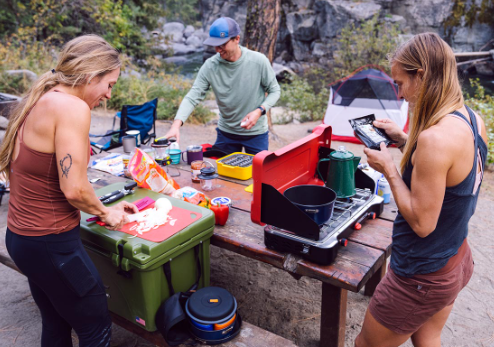How shared activities like cooking, hiking, and touring bring travelers together
Travel is rarely just about the places we visit — it’s about the people we meet along the way. Shared activities transform a journey from a solitary adventure into a collective memory. Cooking local dishes, hiking through mountain trails, or joining guided tours are more than just ways to pass time. They are bridges. According to a 2023 Global Tourism Study, around 72% of travelers said that engaging in shared activities helped them form lasting friendships during their trips. That statistic highlights something important: connection often begins when people do things together.
Cooking as a Cultural Connector
Few experiences are as intimate and universal as cooking. In kitchens across the world, travelers come together to chop, stir, and taste, discovering not just flavors but also each other’s stories. Cooking classes or local food tours are growing fast — in fact, culinary tourism has seen a 30% rise over the past five years. When travelers share a table, the barriers of language or background often fade away. One person might teach how to fold dumplings, another might share the secret to the perfect pasta sauce. The result is not only a delicious meal but also a feeling of belonging.
Cooking together is an act of trust. You pass the knife, you share the salt, you wait for the taste to bloom. Even shy or introverted travelers often open up in such environments. The sensory nature of food — smell, color, taste — creates an emotional space where conversation flows naturally.
Hiking: The Bond of Shared Effort
Unlike cooking, hiking often happens in silence. Yet, this silence binds people in unexpected ways. Two strangers walking the same path can feel connected without words. They share the struggle of steep climbs, the reward of a panoramic view, and the quiet satisfaction of reaching the summit. According to the Adventure Travel Trade Association, 61% of solo travelers choose hiking or trekking experiences precisely because they encourage organic social interaction.
In the wild, there is no need to pretend. Mud, sweat, rain, and laughter create an authentic space. Shared challenges erase social boundaries — age, nationality, or profession stop mattering. The mountain doesn’t care who you are; it only asks that you keep moving forward together.
Touring: Stories That Intertwine
Group tours are often underestimated. Some travelers dismiss them as structured or rigid, but in reality, they offer a unique environment for human connection. Touring ancient ruins or exploring art galleries with others sparks discussion and reflection. Someone points out a hidden detail on a mural, another shares a personal interpretation. These small exchanges slowly weave a web of shared curiosity.
Studies from the European Travel Commission show that nearly 68% of people who join small group tours stay in touch with at least one fellow traveler after returning home. That’s not coincidence. Touring involves shared discovery — the collective excitement of seeing something new at the same moment as someone else. That shared emotional reaction becomes a lasting memory.
Digital Companionship: Meeting Through Anonymous Video Chat
In the digital age, even before setting foot on a new continent, travelers can connect through anonymous video chat platforms. You might already have guessed why strangers video chat is useful. It's an opportunity to exchange tips with strangers, talk about travel, share impressions, and, if desired, even plan joint activities before meeting in person. What makes anonymous video chat special is the freedom it offers: users can be themselves without fear of judgment, speaking with others who share the same wanderlust. It's an early form of connection—spontaneous and genuine.
Why Shared Activities Matter
Shared activities work because they trigger empathy. Psychologists suggest that joint experiences stimulate a sense of unity known as “collective effervescence” — the joy that arises when people move, laugh, or create together. For travelers, that means feeling part of something bigger, even far from home. When people hike, cook, or tour together, they share emotions in real time — joy, awe, exhaustion, humor. These shared emotions form stronger bonds than simple conversation ever could.
Furthermore, engaging in group activities helps combat loneliness, a growing issue among long-term travelers. The World Tourism Organization reports that nearly 40% of digital nomads and frequent solo travelers experience social fatigue after a few months on the road. Participating in shared activities counterbalances that isolation by creating human contact in a natural and enjoyable way.
Beyond the Journey: Bonds That Last
What’s fascinating is that many of these travel-born friendships don’t end when the trip does. They continue online, through messages, photos, or video calls. A recipe shared in Thailand might be cooked again in Canada. A hiking partner from Peru could become a lifelong friend. The shared activity becomes a thread — thin yet strong — tying different lives together across distance and time.
Travelers who experience this often describe it as the most meaningful part of their journey. Landscapes fade, but laughter and companionship remain vivid. Some even plan future trips together, drawn again by the memory of that connection forged through a shared hike or a group tour.
Conclusion: The Human Element of Travel
Ultimately, shared activities remind us that travel isn’t only about movement — it’s about meaning. Cooking unites through taste, hiking through effort, and touring through discovery. Whether online through anonymous video chat or face to face on a mountain trail, people continue to seek connection. When travelers come together, even briefly, the world feels a little smaller and a lot friendlier.
The journey may begin alone, but through shared activities, it rarely stays that way. And that, perhaps, is the true reward of travel — not just seeing the world, but sharing it.
